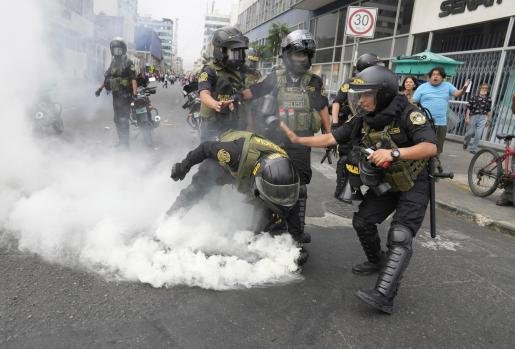Police fired tear gas to try to subdue thousands of protesters who poured into the Peruvian capital Thursday, numerous from remote Andean regions, calling for the ouster of President Dina Boluarte and the return to power of her precursor, whose junking last month launched deadly uneasiness and cast the nation into political chaos. The demurrers have been marked by Peru’s worst political violence in more than two decades and stressed deep divisions between the country’s civic nobility, largely concentrated in Lima, and poor pastoral areas.
Former President Pedro Castillo has been in detention and is anticipated to be tried for rebellion since he was impeached after a failed attempt to dissolve Congress. Thursday was substantially quiet, but pointed by frays and tear gas. The government called on everyone who could to work from home. After eve, clashes escalated, and late that night, a major fire broke out at a building near the major Plaza San Martin, although no connection to the demonstrators was incontinently clear.
The chairman also blamed the protesters for “ not having any kind of social awareness that the country needs, ” indicted them of “ wanting to break the rule of law ” and raised questions about their backing. People who are protesting were also held away and videotape posted on social media showed demonstrators trying to storm the field in southern Arequipa, Peru’s alternate megacity. They were blocked by police and one person was killed in the preceding clashes, Peru’s ombudsman said. That was one of three airfields that suffered attacks from protesters Thursday, Boluarte said, adding “it wasn’t a bare coexistence ” ; they were stormed on the same day.
The 2000 people also had a centralized leadership and were led by political parties. The rearmost protesters have largely been grassroots sweats without a clear leadership, a dynamic that was clear Thursday as protesters frequently sounded misplaced and didn’t know where to head next as their path was continually blocked by law enforcement. The fighters have grown to such a degree that demonstrators are doubtful to be satisfied with Boluarte’s abdication and are now demanding more structural reform.
